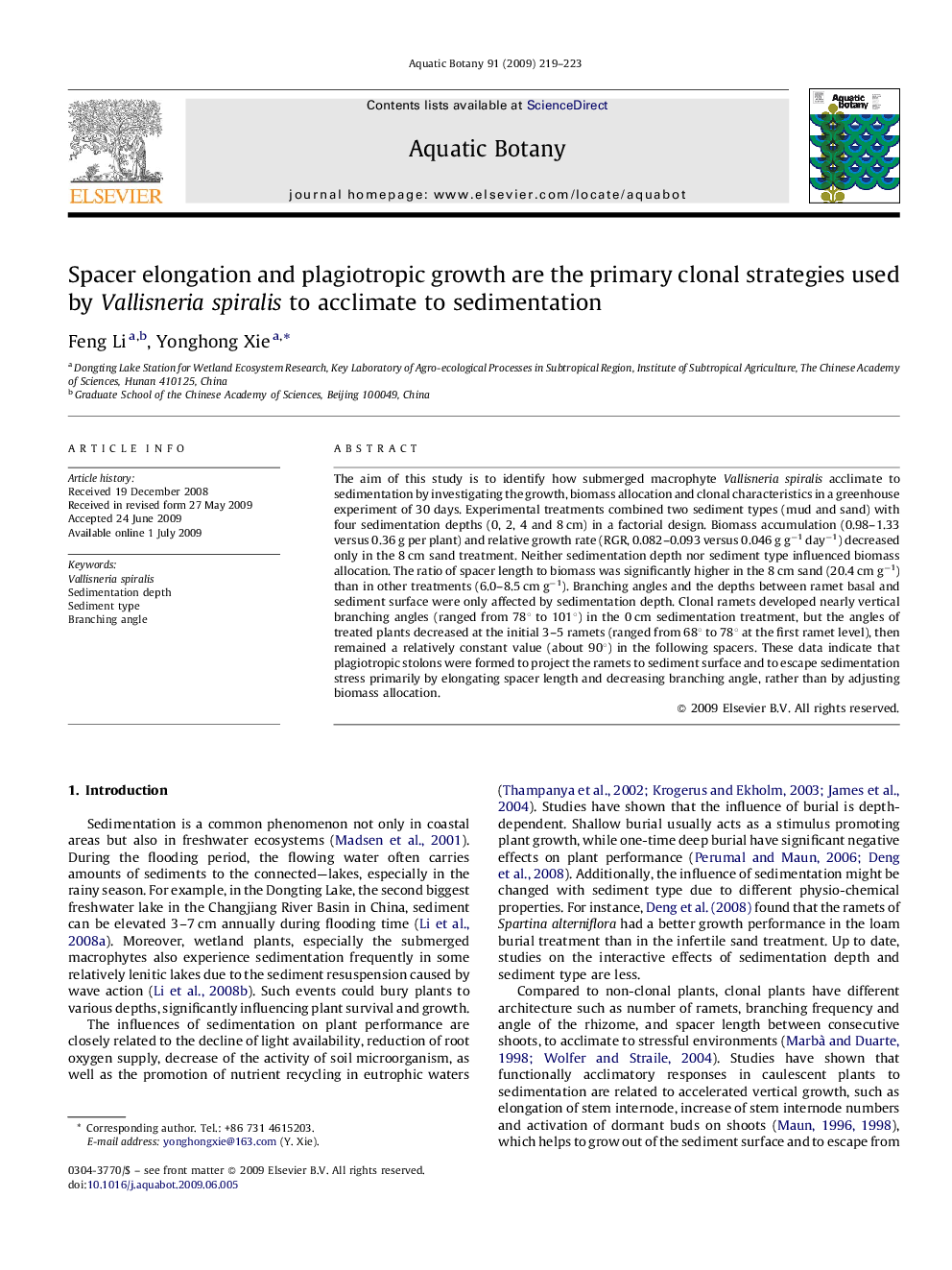| کد مقاله | کد نشریه | سال انتشار | مقاله انگلیسی | نسخه تمام متن |
|---|---|---|---|---|
| 4528271 | 1324296 | 2009 | 5 صفحه PDF | دانلود رایگان |

The aim of this study is to identify how submerged macrophyte Vallisneria spiralis acclimate to sedimentation by investigating the growth, biomass allocation and clonal characteristics in a greenhouse experiment of 30 days. Experimental treatments combined two sediment types (mud and sand) with four sedimentation depths (0, 2, 4 and 8 cm) in a factorial design. Biomass accumulation (0.98–1.33 versus 0.36 g per plant) and relative growth rate (RGR, 0.082–0.093 versus 0.046 g g−1 day−1) decreased only in the 8 cm sand treatment. Neither sedimentation depth nor sediment type influenced biomass allocation. The ratio of spacer length to biomass was significantly higher in the 8 cm sand (20.4 cm g−1) than in other treatments (6.0–8.5 cm g−1). Branching angles and the depths between ramet basal and sediment surface were only affected by sedimentation depth. Clonal ramets developed nearly vertical branching angles (ranged from 78° to 101°) in the 0 cm sedimentation treatment, but the angles of treated plants decreased at the initial 3–5 ramets (ranged from 68° to 78° at the first ramet level), then remained a relatively constant value (about 90°) in the following spacers. These data indicate that plagiotropic stolons were formed to project the ramets to sediment surface and to escape sedimentation stress primarily by elongating spacer length and decreasing branching angle, rather than by adjusting biomass allocation.
Journal: Aquatic Botany - Volume 91, Issue 3, October 2009, Pages 219–223